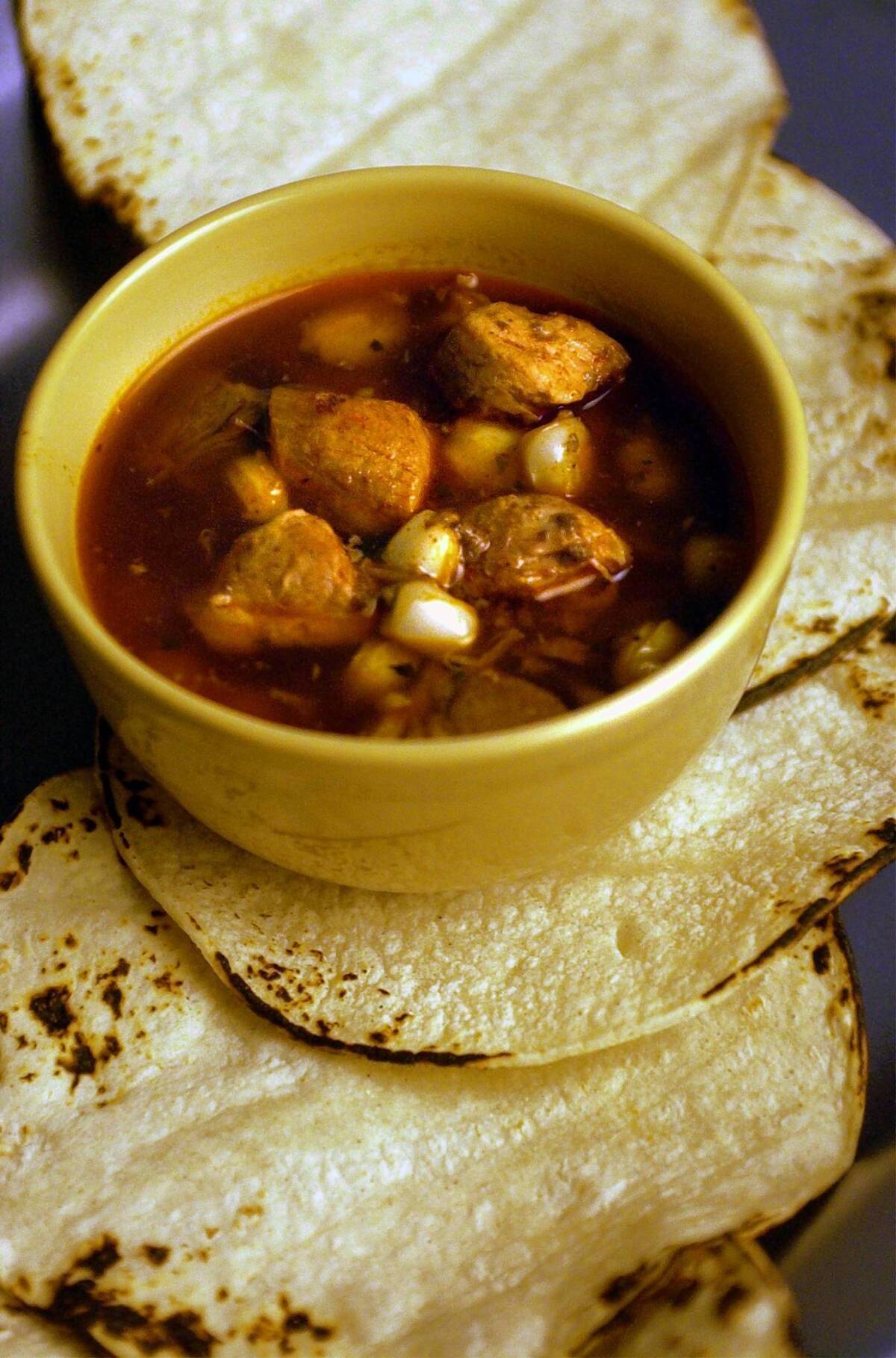Posole, the taste of Christmas in New Mexico

My family has lived in Southern California for more than 25 years now, but at the holidays we still seem to think of ourselves as transplanted New Mexicans. We string red chile lights, bake anise-flavored biscochito cookies, put out the candle-lit paper bags called luminarias and, most notably, make gallons — and I do mean gallons — of posole for our annual open house.
Posole in New Mexico is a little different from the version that is usually served in Southern California. Rather than a brothy soup with condiments, New Mexico posole is more of a stew. It derives its rich texture and deep flavor from long cooking rather than last-minute sprinkling with garnishes (though I have had a hard time convincing partygoers of that — I find that no matter how many admonitory signs I put up, they can’t resist doctoring — tainting? — my posole with the chopped green onions, cilantro and even sour cream I put out for the black beans).
It’s an elemental stew, and I’m afraid there is no set recipe; the exact mix varies from year to year, and I insist on believing that’s part of its magic.
There are some must-have ingredients, of course. Primary among these is pork butt. Lots of pork butt. Lots and lots of pork butt. Last year I used 10 pounds of trimmed pork, and we ran out of posole in less than an hour. After 12 months of hectoring from my lovely wife, this year I used 15 pounds and we were OK. Besides pork, there is also more pork. Neck bones are great when you can find them (the meat that comes off after cooking is sublime). And you absolutely have to have pig’s feet. They contain so much gelatin that the chilled posole sets up like a terrine.
Posole takes time to make properly. Two nights before the party, I cut up the pork butts and marinate them in red chile. Sometimes I make the sauce myself; sometimes I use the very good Bueno brand frozen red chile I get at my supermarket — it’s a great convenience when you’re making gallons. At this point, I’d like to say a word in favor of having a big box of disposable plastic gloves when you’re working with red chile. If you haven’t, you’ll understand why the first time you rub your nose (or anything else).
The next day, I cook the pork with the pig’s feet and the neck bones in even more red chile, with onions, a lot of garlic as well as a healthy shot of dried oregano and a smaller dose of ground cumin. After three or four hours, when the meat is almost falling apart, I refrigerate it overnight.
The day of the party, I remove the fat layer from the stew, rescue the neck bones and pig’s feet (remember those gloves!), strip them of their meat and chop that coarsely. Then I return the stew to the heat and add the posole corn. When I was younger and more ambitious (and had access to great posole corn), I would cook the hominy separately and add a bit of the broth from that to the stew. These days, I confess, I used canned hominy (well-rinsed), and no one has ever complained.
It takes a couple of hours for the flavors to meld; more is even better. That’s a lot of preparation for one little stew, but when I close my eyes and taste it, I can almost believe I smell snow and piñon smoke in the air — even if I’m wearing a T-shirt and standing under my backyard lemon tree.
More to Read
Eat your way across L.A.
Get our weekly Tasting Notes newsletter for reviews, news and more.
You may occasionally receive promotional content from the Los Angeles Times.







